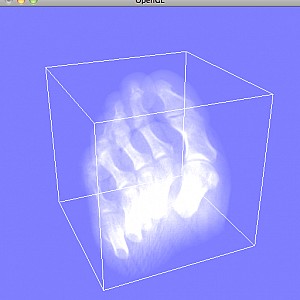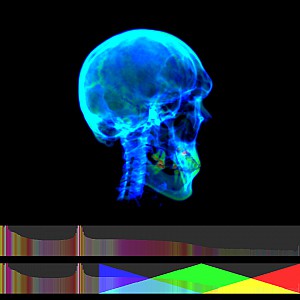Emission
← Integration with OpenGL | ● | Emission and Absorption →
Assumption: no absorption, just emission
- Emitted light is accumulated on the viewing rays
- Accumulated intensity is linear proportional to the traveled ray length
Numerical integration step:
Realization of numerical integration with OpenGL: Numerical integration by view-aligned slicing with slice distance $\Delta t$ and add-operator with constant vertex color $(\mu_E \Delta t, \mu_E \Delta t, \mu_E \Delta t)$ and modulation of vertex color with 3D-texture lookup of $s(t)$.
Ambient background emission needs to be disabled.
Non-linear transfer function $TF_E=\kappa(s(t))$ allows coloring of specific materials based on their scalar value (using a TF Editor):
Colored via transfer function:
Advantages:
- commutative
- colors
Disadvantages:
- still no depth perception
- emission gets saturated quickly
Vertex color:
3D texture modulation:
glTexEnvi(GL_TEXTURE_ENV,GL_TEXTURE_ENV_MODE,GL_MODULATE);
Add-operator with OpenGL-blending:
glEnable(GL_BLEND);

